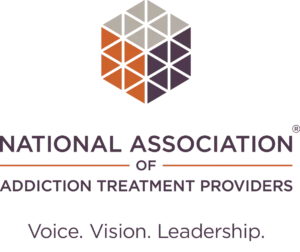
Digital Detox: Effective Technology Addiction Treatment
Learn more about technology addiction treatment and how J. Flowers Health Institute can help you or your loved one recover.
Table of Contents
Art Therapy
Technology Addiction Treatment: Understanding Addiction
Neurobiology of Addiction
Factors Influencing Addiction
Types and Categories of Addiction
Below are some common types of addiction.
Substance Addiction
Substance addiction refers to a situation where you repeatedly use a substance, such as drugs or alcohol, despite harmful consequences. One common type of substance addiction is opioid addiction.
What Are Opioids?
Opioids are a class of drugs that include the illegal drug heroin, as well as prescription painkillers like:
- Oxycodone
- Hydrocodone
- Codeine
- Morphine
Opioid addiction is characterized by a powerful, compulsive urge to use opioid drugs, even when they are no longer needed medically.
Behavioral Addiction
Behavioral addiction involves compulsive engagement in behavior like gambling, eating, or using technology.
What is Technology Addiction?
Technology addiction is a type of behavioral addiction where you find it hard to stop using technology, even when it causes negative consequences in your life. This might include compulsive use of:
- The Internet
- Smartphones
- Video games

Technology Addiction: Causes and Symptoms
Below is more information about technology addiction and why someone might need technology addiction treatment.
Causes of Technology Addiction
Technology addiction, like other forms of addiction, doesn’t have a single cause. It’s often a mix of factors that can lead someone to develop this condition. One factor could be the constant availability of technology.
Constant Access to Technology
With smartphones, tablets, and computers, you have access to the internet and its endless stream of information and entertainment all the time. This constant access can make it easy for you to form a habit of checking your devices often.
Using Technology as an Escape
Another factor could be using technology as a way to escape from stress or problems in one’s life. You might find yourself turning to your devices when you’re feeling sad, anxious, or bored.
Over time, this can lead to a dependence on technology to cope with negative feelings. This dependence can turn into an addiction.
Common Symptoms
Technology addiction can show up in many ways. These include:
- Spending More Time on Technology Than Intended: You might find that you’re spending more and more time on your devices, often at the expense of other activities.
- Neglecting Responsibilities: If your use of technology is getting in the way of work, school, or other responsibilities, this might be a sign of technology addiction.
- Feeling Restless or Anxious When Not Using Technology: If you feel uncomfortable or anxious when you can’t use your devices, this could be a sign of withdrawal, which is a common symptom of addiction.
Unsuccessful Attempts to Cut Down: You might have tried to reduce your use of technology but found it difficult to do so. This is another common symptom of addiction.
Side Effects and Risk Factors
Below are possible side effects and risk factors of technology addiction. These might warrant technology addiction treatment.
Physical Effects
You might experience eye strain or headaches from staring at a screen for too long. Sitting for extended periods while using technology can also lead to problems like back pain and an increased risk of obesity.
Mental Effects
Social Effects
Technology addiction can impact your social health. If you’re spending a lot of time on your devices, you might be neglecting face-to-face interactions with friends and family. This can lead to feelings of isolation and loneliness.
Risk Factors for Technology Addiction
Some people might be more likely than others to develop technology addiction. Several factors can increase your risk.
Personality Traits
People who are high in neuroticism (characterized by negative emotions like anxiety and depression) and low in conscientiousness (characterized by organization and discipline) may be more prone to technology addiction.4
Age
Young people, especially teenagers, spend a lot of time online. Because of this, they’re more susceptible to developing a technology addiction.
Mental Health Conditions
People with conditions like depression, anxiety, or ADHD may be more likely to become dependent on technology.
Social Factors
If you’re feeling lonely or isolated, you might turn to technology as a way to connect with others or escape from your feelings.
If any of these risk factors apply to you, it might be beneficial to seek technology addiction treatment. Such treatment can help you understand why you’ve become dependent on technology and provide strategies to help you manage your use.
Prevalence and Commonality
In the U.S., the prevalence rates of technology addiction have shown an alarming and growing trend. According to the Pew Research Center, 85% of Americans report going online daily, with 31% admitting that they are online “almost constantly.”5
The Depth of Tech Addiction
The onset of the COVID-19 pandemic has further increased screen time. 57% of American users admitted that their screen time increased by more than an hour during lockdown periods. Furthermore, 71% of users sleep with their mobile phones beside them.
Intruding on Everyday Life
Technology use has intruded into many aspects of life, often to the detriment of social and personal activities.

Assessment and Diagnosis for Technology Addiction Treatment
The assessment and diagnosis criteria for technology addiction treatment will be detailed below.
Recognizing Problematic Use
Diagnostic Tools
These are not tests that you pass or fail. Instead, they help healthcare providers understand if technology is causing problems in your life.
If your answers suggest that your technology use is creating problems, it might be a signal that technology addiction treatment could be beneficial for you.
Self-Reporting and Clinical Observation
- How often you use technology
- Which devices or platforms you use most
- How you feel when you’re not able to use technology
Clinical Observation
Differential Diagnosis
For example, frequent technology use might also be a symptom of conditions like depression, social anxiety, or ADHD. By considering these possibilities, healthcare providers can make sure you get the most appropriate treatment for your needs.
Technology Addiction Treatment: Benefits of Digital Detox
Below are the benefits of digital detox and technology addiction treatment.
Improved Sleep
By reducing screen time, especially in the evening, you might find that you fall asleep quicker and have a more restful sleep.
Better Cognitive Function
Our brains are not designed to be in a constant state of alert, bombarded with information from various digital sources. This continuous stream of data can lead to cognitive fatigue.
This can affect our ability to:
- Concentrate
- Make decisions
- Think creatively
Strengthened Real-world Relationships
- Spending quality time with friends or family
- Engaging in hobbies such as reading or painting
- Being present in the moment
Increased Productivity
Strategies for Successful Technology Addiction Treatment
Below are some strategies for making technology addiction treatment successful.
Creating a Digital Detox Plan
Your journey toward technology addiction treatment begins with creating a digital detox plan. This plan should outline when, where, and how you’ll reduce your technology use.
For example, you could start by setting aside a couple of hours each day without devices.
Setting Realistic Goals
When it comes to technology addiction treatment, setting realistic goals is key. You don’t have to eliminate all screen time right away. You could aim to reduce your daily screen time by an hour or two to start.
Establishing Support Systems
Having friends, family, or professional support can make technology addiction treatment more effective. These support systems can provide encouragement and help hold you accountable during your digital detox.
Identifying Triggers and Avoiding Them
You can make progress in technology addiction treatment by identifying your triggers for excessive technology use and avoiding them. A trigger could be:
- Stress
- Boredom
- Certain times of the day
Practicing Mindfulness and Self-Reflection
Engaging in Physical Exercise and Outdoor Activities
Physical exercise and outdoor activities are effective replacements for screen time. These activities can distract you from the urge to use technology and provide health benefits.
Seeking Alternative Hobbies
Seeking alternative hobbies and interests can help to keep your mind occupied in a more productive and enjoyable way.
Examples include:
- Playing an instrument
- Reading
- Writing
- Doing volunteer work
Setting Technology-Free Zones and Times
Utilizing Digital Detox Apps and Tools
There are several apps and tools that can assist in your digital detox. These tools can:
- Block distracting websites or apps
- Track your screen time
- Provide reminders to take breaks from screens

Determining Healthy Digital Leisure Time
Balancing Screen Time and Other Activities
Striking a balance between screen time and other activities can make your technology addiction treatment more successful.
Alternate periods of using technology with activities that don’t involve screens. This way, you’re not removing digital devices entirely but learning to manage their use in a healthy way.
A Healthier Digital Lifestyle
Maximizing Technology Addiction Treatment Benefits
"Effective strategies in technology addiction treatment include Cognitive Behavioral Therapy (CBT), Motivational Interviewing (MI), Mindfulness-Based Stress Reduction (MBSR), digital detox, and healthy coping mechanisms. These interventions help individuals regain control over technology use, establish healthier habits, and develop alternative coping strategies for a more balanced and sustainable digital lifestyle. Family Therapy and Medication Assisted Therapy are also treatment strategies we use when appropriate."
J. Flowers Health Institute Multidisciplinary Staff
What It Means to be an Active Participant
Being an active participant means openly discussing:
- Your experiences with technology use
- Any struggles you face
- The goals you want to achieve
This information helps your team tailor the treatment to meet your specific needs.
Building a Therapeutic Relationship
The therapeutic relationship is built on trust, respect, and understanding. It’s like a safe harbor where you can express your thoughts and feelings without fear of judgment. It’s a space where you are heard and where your experiences are validated.
This kind of relationship encourages open communication, which is key in addressing the challenges you face in your journey toward overcoming technology addiction.
Benefits of a Healthy Therapeutic Relationship
A solid therapeutic relationship also fosters motivation and adherence to treatment. When you feel understood and supported by your healthcare provider, you’re more likely to stay engaged in the treatment process and follow through on therapeutic tasks and recommendations.
Utilizing Additional Supportive Resources
These can range from self-help books and educational materials about technology addiction, to support groups where you can connect with others who are facing similar challenges.
Support Groups
Support groups, in particular, can be a valuable resource. They provide a platform where you can share your experiences, learn from others, and receive encouragement and support.
It’s like being part of a team where everyone is working towards the same goal – overcoming technology addiction.
Educational Materials
Educational materials and self-help books can equip you with knowledge and strategies to manage your technology use. They can serve as a guide, providing practical tips and insights to help you navigate your recovery journey.

Technology Addiction Treatment at J. Flowers Health
J. Flowers Health Institute, led by Dr. James S. Flowers, stands as a beacon for those seeking technology addiction treatment. The institute is nestled within the heart of the Texas Medical Center in Houston, Texas. We have expanded to help European clients in London as well.
Focusing on Individualized Treatment
The J. Flowers Health Institute curates programs to fit the unique circumstances of each client. This includes:
- Patients seeking a clear diagnosis
- Those facing complex mental health or addiction disorders
- Individuals preferring a one-on-one approach to treatment
The J. Flowers Approach to Technology Addiction Treatment
The J. Flowers Health Institute takes a unique approach when it comes to technology addiction treatment.
We start by conducting a comprehensive diagnostic evaluation to fully understand the extent and nature of the addiction. This includes an in-depth analysis of the client’s lifestyle, mental and physical health, and any other factors that may contribute to the addiction.
Once a clear diagnosis is made, a personalized treatment plan is designed. This plan includes medical, psychiatric, and therapeutic strategies catered to the person’s needs. The goal is to help the client regain control over their technology use and return to a healthy, balanced lifestyle.
Long-Term Care and Support
This program offers virtual one-on-one visits and continued coordinated care with local providers. This way, clients are able to transition smoothly to independent living while still receiving the necessary support from the J. Flowers team.
This level of ongoing care ensures that the gains made during the treatment process are maintained in the long run, helping clients to successfully navigate their journey towards recovery and wellness. Reach out to learn more today.
Resources
- https://www.theguardian.com/global/2021/aug/22/how-digital-media-turned-us-all-into-dopamine-addicts-and-what-we-can-do-to-break-the-cycle
- https://nida.nih.gov/publications/drugfacts/genetics-epigenetics-addiction
- https://www.ncbi.nlm.nih.gov/pmc/articles/PMC9638701/
- https://www.sciencedirect.com/science/article/abs/pii/S0747563216303363
- https://techjury.net/blog/technology-addiction-statistics/
- https://www.pcmag.com/news/americans-spend-over-11-hours-per-day-consuming-media
- https://www.ncbi.nlm.nih.gov/pmc/articles/PMC4291825/
- https://comparecamp.com/technology-addiction-statistics/
- https://www.ncbi.nlm.nih.gov/pmc/articles/PMC4600140/
- https://www.ncbi.nlm.nih.gov/pmc/articles/PMC5839336/
- https://www.ncbi.nlm.nih.gov/pmc/articles/PMC7366948/
- https://www.prnewswire.com/news-releases/screen-educations-smartphone-distraction–workplace-safety-survey-finds-us-employees-distracted-2-5-hours-each-workday-by-digital-content-unrelated-to-their-jobs-301120969.html









